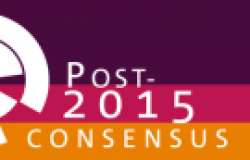Gender Equality, and What it May Mean for Society at Large

The Post-2015 Consensus' eleventh set of papers explore the value of gender equality, and what it may mean for society at large.
The Copenhagen Consensus Center has just released its latest research on Gender Equality targets for the post-2015 development agenda. Irma Clots–Figueras, Associate Professor, Department of Economics at the Universidad Carlos III de Madrid writes the main report, peer-reviewed in perspective papers by Joyce P. Jacobsen, Professor of Economics at Wesleyan University, and by Elissa Braunstein, Associate Professor, Department of Economics at Colorado State University. Additionally, NGOs, UN agencies and stakeholders such as UN Women, ACDI/VOCA and Nordic Consulting Group Sweden present viewpoint papers concerning Clots-Figueras’ analysis. You can read all of the reports here.
Even if believe we have come a long way regarding gender equality, the fact is that up to today, women tend to hold lower-paying jobs, be under-represented in politics and the upper levels of business, and bear the brunt of domestic violence. In parts of the developing world, women have it even harder; traditional cultural norms may mean that many girls receive little education, are married off and bear children while still adolescents and cannot even open a bank account.
Simple morality dictates that men and women should be treated equally but the more difficult question is what does gender equality do to improve lives? Are women just equally free to live in poverty, or are they freer to help families and societies lift themselves out of poverty? What are the most cost-effective ways to achieve better treatment of women?
Gender equality is a big issue with various important components, including reproduction: allowing women control over pregnancy means fewer deaths in childbirth, reducing infant deaths and giving mothers more time to devote to raising their families and earning an income.
But that is not the only way to think about gender equality. We should also think of reducing violence against women, ensuring they have equal rights and lifting them out of poverty by getting out of the cycle of early marriage and childbirth, and empowering them to be full members of society. This is easier said than done, however, in a new paper on gender equality, Professor Irma Clots-Figueras sheds light on this complex issue.
So what’s the smartest target to improve the lives of women? Ensure women have control over their bodies and reproductive decisions. This will likely generate benefits of $120 per dollar spent, because it will not only prevent deaths and illness during pregnancy and birth, but also increase investment in education of the next generation, leading to large productivity increases along with a sizable demographic dividend.
The next recommendations are to empower women economically and to ensure more female education. These targets benefit women $7, and $5 respectively, for every dollar spent.
Then there are two legal-political targets where the benefits are likely to be large, and the costs seem low, namely ensuring equal rights (property, contracts, business registration and banking) and increasing political representation of women.
However, the paper recommends we do NOT include absolute targets on ending violence and child marriage. Why? Because we don’t even know how to end violence, and to the extent we can, stopping the last one percent of violence will be phenomenally expensive. A more realistic target is to “reduce violence against girls and women” and “reduce child marriage”. Unfortunately, there is little economic evidence to suggest whether this will be a good or poor target. Thus, a focus on reproductive rights, education and empowering women economically will have much more certain benefits, a high benefit-cost ratio and indirectly help by both reducing violence and delaying marriage.


